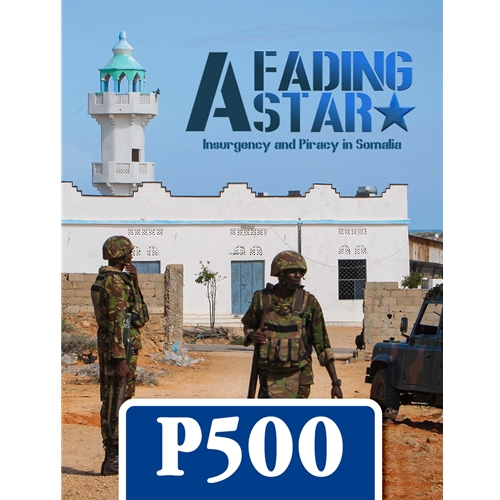
Highlights:
- An updated take on contemporary aspects of insurgency and peacebuilding. The Al-Shabaab insurgent enjoys intelligence supremacy that allows them to conduct deadly out-of-turn ambushes, while facing a slightly less pronounced asymmetrical disadvantage than insurgent factions in previous volumes (due to the comparative weakness of the Transitional Federal Government). On the other hand, the African Union Mission’s logistical, kinetic, and peacebuilding capacities will evolve as contributing countries join or leave the coalition throughout the game.
- Intense urban warfare is depicted in more detail through the struggle for control of the capital city Mogadishu. Controlling a majority of districts will provide the ruling faction with further legitimacy and enhanced capabilities. However, limited operational effectiveness, mobility restrictions, and the looming threat from a major Al-Shabaab offensive will greatly slow the COIN factions’ progress toward stabilizing the city.
- A new ‘Clan Struggle’ interphase draws out some of the conflict’s unique uncertainties. All sides bid to forge new alliances with local clans, bringing new blood to the battlefield, while the African Union must deal with the consequences of delayed reinforcements or unilateral withdrawals by member countries, and the Pirate warlords collect lucrative tolls from roads and ports that they control.
- A unique piracy subsystem, inspired by the Traveler deck featured in Fred Serval’s A Gest of Robin Hood, debunks the Somali pirate mythos and explores how piracy stakeholders’ interests actually intersected with other local actors during the golden age of Indian Ocean hostage-taking.

Faction descriptions:
- Al-Shabaab wages a deadly Islamist insurgency against the African Union ‘occupiers’ and their dependent Transitional Federal Government allies. A clear edge in media warfare provides them with significant recruiting capacities that will help them build a Somali caliphate transcending the customary clan system.
- Ugandan and Burundian troops serving in the African Union Mission in Somalia (AMISOM) aim to enforce peace, build support for the Transitional Federal Government, and train the weak federal army. Neighboring Ethiopia and Kenya may also enter the scene to stabilize their respective borders while interfering in Somali politics.
- An abysmally weak Transitional Federal Government seeks to survive in a besieged Mogadishu while reaching out into the rest of the country to advance the federalization process. Unprecedented embezzlement capacities and partnerships with like-minded clans may offer the consecutive administrations an opportunity to survive the conflict unharmed and more prosperous than ever, and a new kind of militia unit emphasizes the opportunistic nature of the Somali clans’ agendas.
- Pirates, minor clans, and unaligned warlords pursue their enrichment projects by raiding the high seas or setting up roadblocks across unruly parts of the country. They’ll settle for a “customary” Somalia, neither rooted in sharia law nor totally anchored to the liberal world order.
1. A Fading Star is the main four-campaign scenario. Through an eight-year-long story starting in 2007, when the federal government resettled in a war-prone Mogadishu, you’ll witness the slow decline of piracy and the struggle for an insurgent-free South-Central Somalia. The scenario historically ends with Al-Shabaab’s “Emir” Ahmed Abdi Godane’s death in a US drone strike and the subsequent AMISOM sweepings of major Al-Shabaab strongholds.2. The Lion of Mogadishu scenario is a three campaign mid-length scenario, starting in 2009. As Ethiopian troops completely withdraw from the country, a precarious situation ensues, leaving the underequipped AMISOM contingent responsible for the capital’s fate. In the countryside, the Somali clans consider their impact on the war as the federal government’s days might be numbered.3. Fighting for Peace is the shortest scenario, with the factions competing through two campaigns covering the four years following Al-Shabaab’s 2011 retreat from the capital. The pirates face an existential crisis as they must deal with increased efforts by the seafaring industry and global community to deter their business. At the same time, more clan elders begin to join the country’s federalization process.


Comentarios